I’ve been trying to figure out what to do with Tafu’s Green Tea Powder because both my sister and I stopped drinking it after a while. We have other green teas that we prefer so this doesn’t come out much. But when I saw this recipe for Matcha Mochi Cupcakes from Tiny Urban Kitchen, I realised that this was the perfect way to use up some of the green tea.
Making the Muffins
(I realised that the name is “cupcakes” but I’ve been calling them muffins the whole time so muffins they shall be)
The hardest part of making these turned out to be getting the glutinous rice flour. I thought it would be pretty easy to get, since it’s used in Chinese cooking as well, but I visited three supermarkets and one Japanese food street (that had katakuriko and other flours, just not mochiko) over three days and only found this:
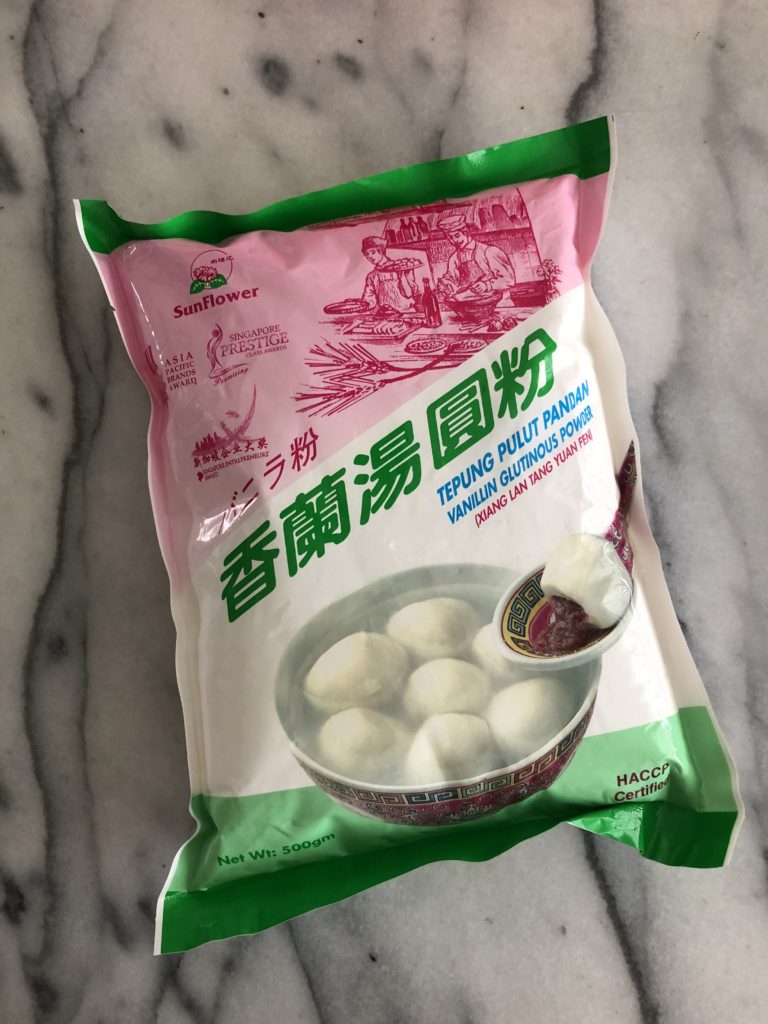
It’s probably not glutinous rice flour, but the back did say that it could be used to make mochi and I figured that this was the closest substitute that I could get.
The rest of the ingredients were, thankfully, much easier to get ahold of.
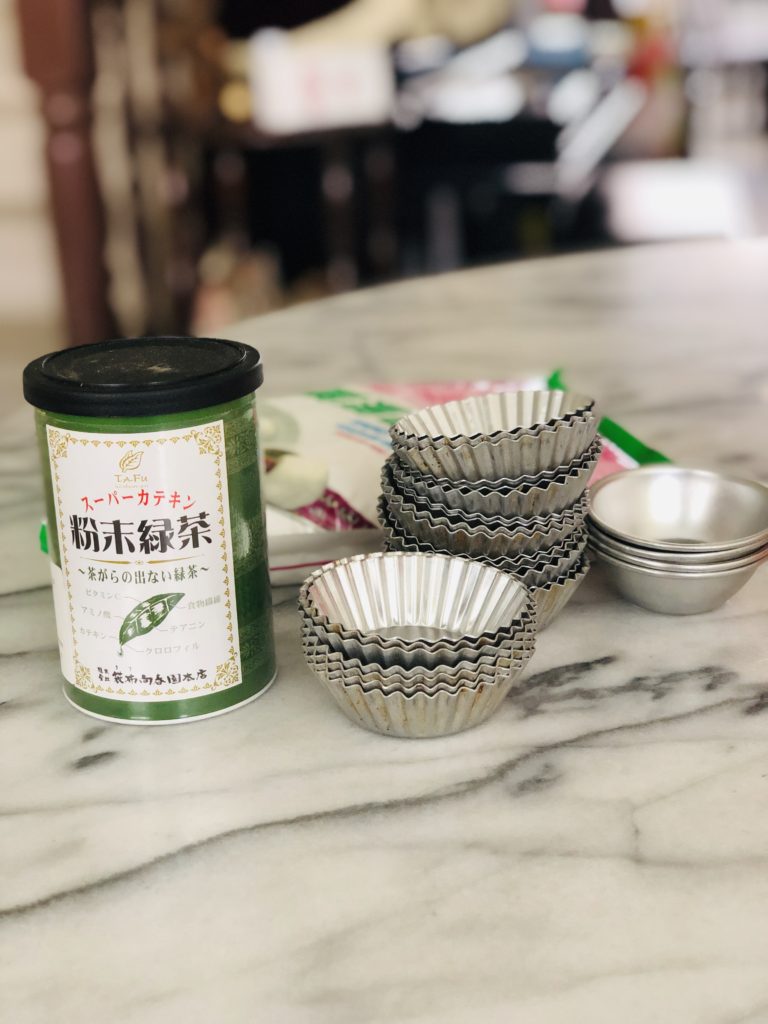
Apart from the flour and green tea, the I only made two changes to the recipe.
The first was the amount of sugar used. Two cups sounded like quite a lot and I figured I could get away with one and a half cups. It’s the healthier choice (but no HPB points for eating these).
The second was that I added chocolate chips. The first batch was plain, but the batches after that all had mini chocolate chips in them.
The Results
Here are my green tea mochi muffins right out of the oven:
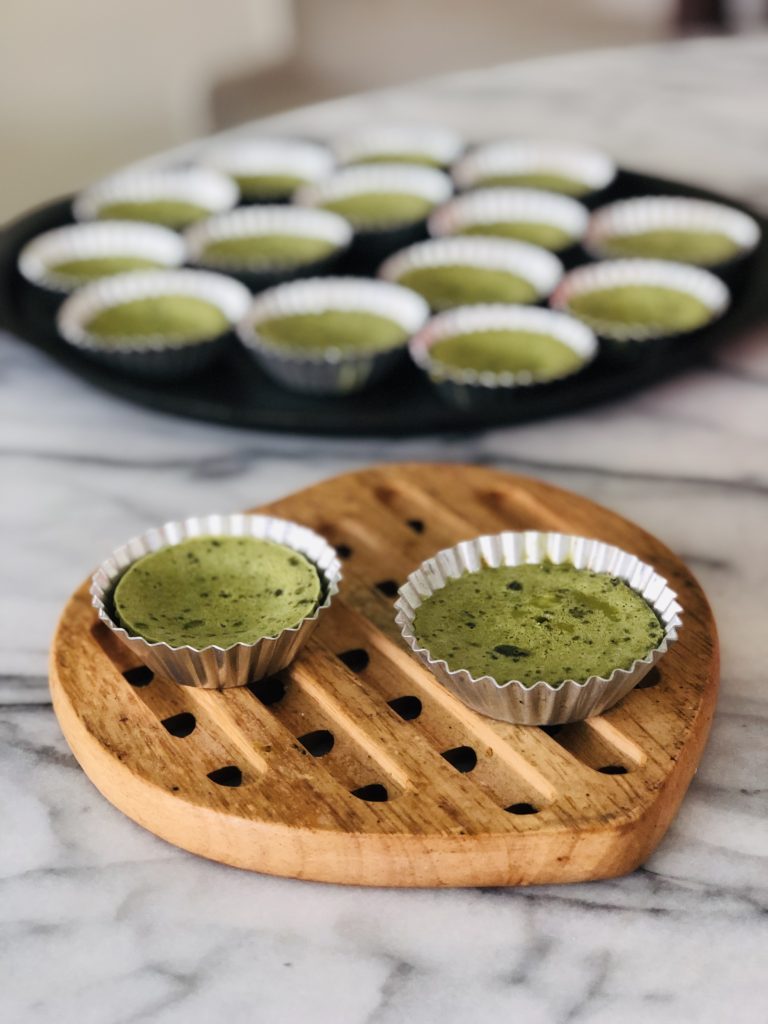
The tangyuan flour made it denser and slightly less chewy than what it would have been if I used actual glutinous rice flour, but i was still pretty chewy! Everyone liked the texture and most people thought that the sweetness level was just right. In fact, a few people even asked me if I could make it less sweet, so I may try cutting down to one cup next time.
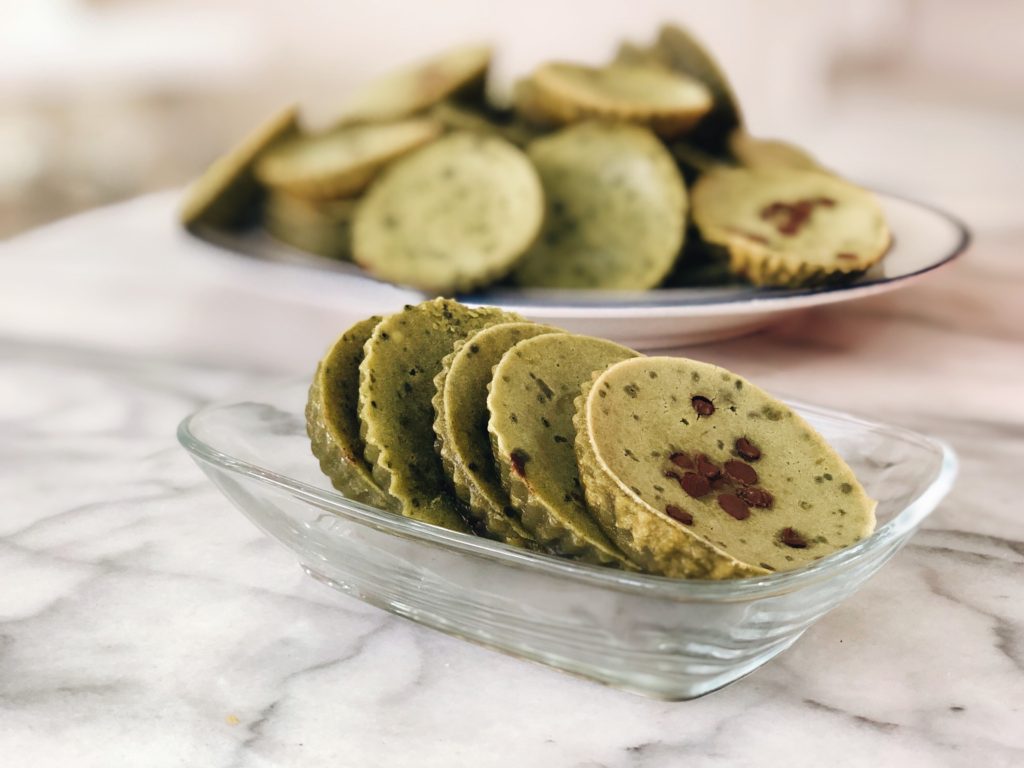
Surprisingly, the chocolate versions were the most popular. The chocolate ended up playing really well with the green tea and I’ll probably be adding chocolate chips to all future mochi muffins.
What I’ll do Next Time

Although I’m pretty glad that I managed to successfully make the mochi muffins, even with all the substitutions and changes, there are a few things that I can do next time to make it even better:
- Substitute in some hot water for milk – I was told that adding hot water to the flour before adding the cold ingredients would make the final product chewier (or maybe I’ll have to bring the rest of the liquids to room temperature? Gotta check this point). If I can find a tea that will be concentrated enough, I might use hot tea instead of hot water and have that be the flavouring.
- Sieve the liquid before baking. The tea didn’t dissolve fully no matter how hard I stirred, which resulted in spots:
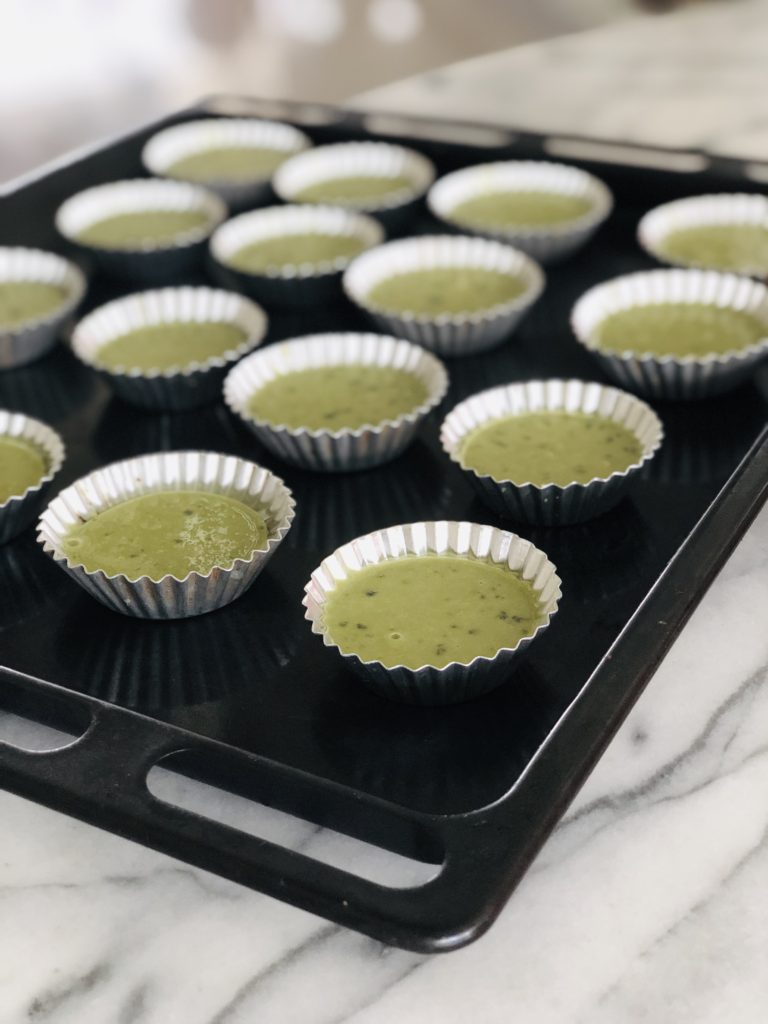
This didn’t impact the final taste, but it doesn’t look good. I didn’t think of the sieving thing earlier but I’m definitely doing that next time!
Tea Digression – What Kind of Tea Should I Use?
I made this because I had some tea that was too rough to drink as it was and I figured that the milk and sugar in the recipe would smoothen it out. But I as I looked up the matcha muffin recipes (I looked around before deciding to use Tiny Urban Kitchen’s), some were saying to use good matcha because it makes a difference.
But I wonder if that’s the case. A lot of the time, the best teas have subtle and complex flavours that would get lost when things like milk or sugar added. If you want to add something, I’d think that you need a bold tea, something with rough edges that can hold its own against the other ingredients.
On the other hand, I suppose that a poor quality tea can ruin the food too, if it’s overly bitter or astringent and the other ingredients cannot patch it up. Or perhaps this is on a case by case basis – I’m normally cooking things that need bold teas so to me, a very refined tea would be wasted, but if you’re making jellies or other things where the tea flavour is the only flavour, then a good tea would be preferable.
Or maybe the whole thing is an inverse-U curve, where there’s an optimum quality level for the tea to be used in cooking – too high and it’s wasted, too low and it ruins the food. Any thoughts?
Tea Digression 2 – On Matcha
I know I used green tea here, but the original recipe called for matcha so I ended up googling about culinary vs ceremonial matcha. I was quite surprised to hear all the English blogs say that culinary and ceremonial matcha was a distinction made only outside Japan if you’re looking for matcha online in Japanese, you can find matcha for cooking (食材用抹茶, 食品加工用抹茶). Plus, when I went for that matcha business event, all the companies divided their matcha into two categories – one for use in food and one for drinking, and all the Japanese matcha companies I saw online did this as well. I’ve even seen matcha developed specially for cooking – these are matcha powders with certain taste profiles, or have colours that are designed to remain a vibrant green even after heat has been applied. So now, I’m wondering if the cooking matcha in Japan and the culinary matcha overseas are two completely different things.
Also, I just realised that there are two types of matcha: 濃茶 (koicha) and 薄茶 (usucha). I think I see mostly 濃抹茶, which is why I completely didn’t realise that 濃茶 is a different type of matcha! I have read that 濃茶 has a different texture – I hope I get the chance to try this in the future. Would love to do a more in-depth post, but it would be weird to write about it without trying it!
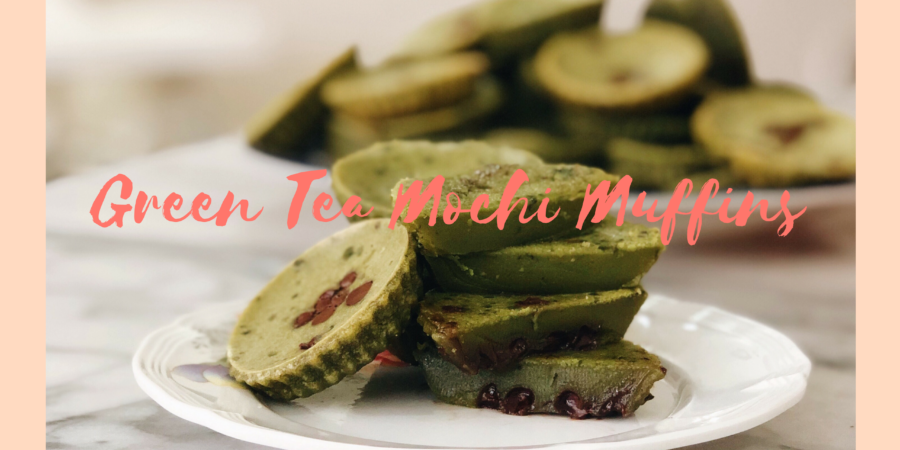
Last month I tried making coconut mochi muffins for the first time, following a recipe from I Am A Food Blog! I also have a friend who regularly makes coconut matcha mochi muffins. Those might be fun for you to experiment with too! -Audrey | Brunch at Audrey’s
Oooh, coconut matcha and coconut sound really fun too! I’ll have to check out her recipe!
These look good! About your comment on using good-quality matcha for baking, I always wonder the same thing about wine. In cooking classes I’ve been told to use high-quality wine but if I’m adding other strong ingredients, it seems as though, as you say, I need something bold because nuances get buried. I personally would rather drink the really good stuff and use the less good for cooking!
Yes! I’ve once used good white wine for cooking because I ran out of cooking wine and I did not taste the difference. Not sure if it’s just my tastebuds or the food I make (a lot of simmering stuff where wine is just an accent, not the star ingredient), but I didn’t see the value of using the good stuff for cooking!
These look so interesting! I like matcha flavored things more than actually drinking tea, so I might have to give these a shot sometime.
It’s a pretty easy recipe to do, so I hope you get to try it soon!